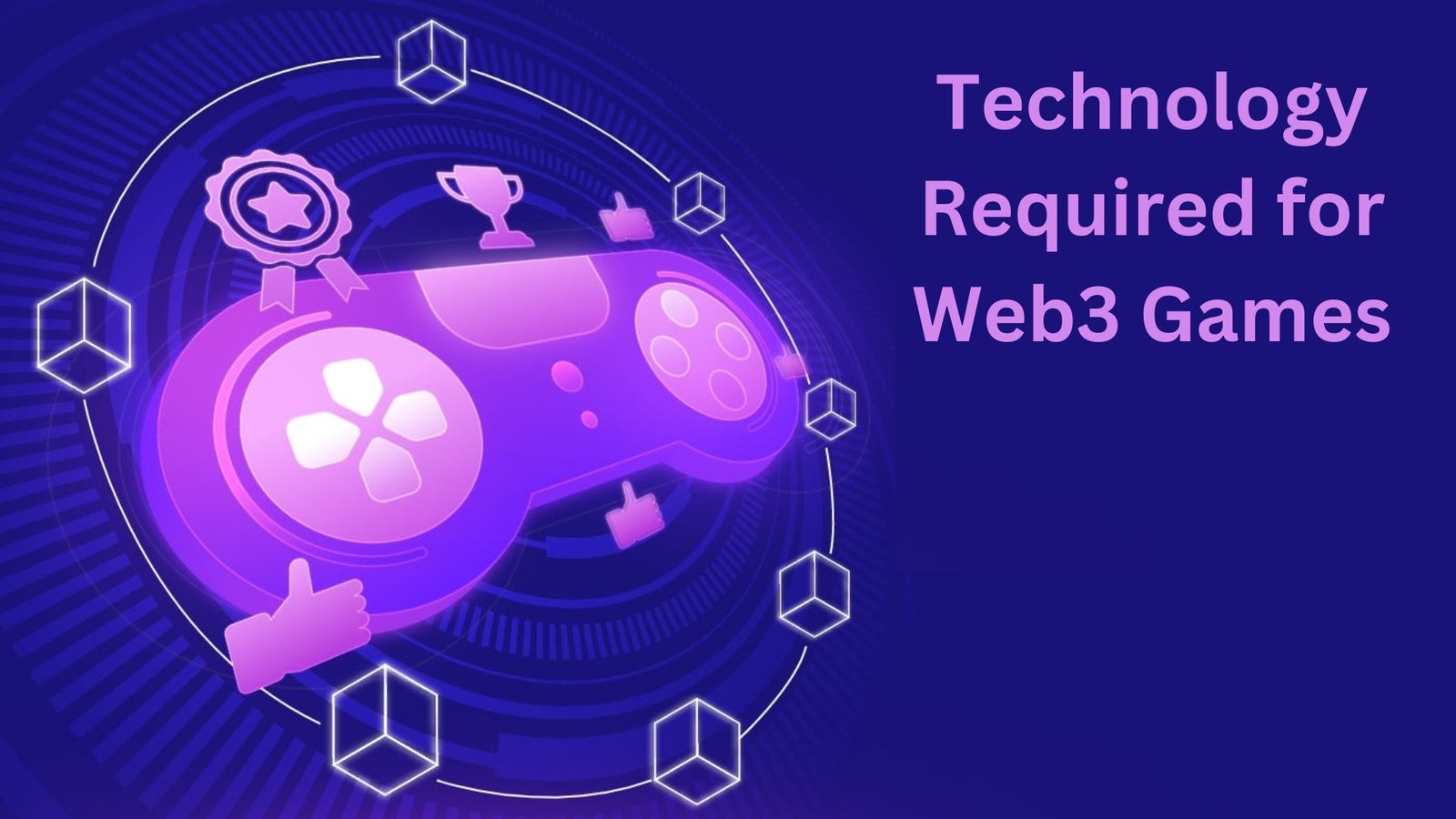
Changes in several sectors have historically occurred in tandem with the introduction of novel technological advances. No one could have predicted how the leading Silicon Valley companies would revolutionize commerce and technology upon the advent of the Internet. Web3 gaming is the first step on a lengthy road that begins with the web3 revolution, which will occur years after the Internet business revolution.
The idea behind web3-based gaming radically differs from that of more traditional gaming platforms. With their decentralized methods of participation, web3 games provide a fresh take on gaming. This debate will help you uncover the answer by delving into the basics of web3 games.
Problems with Traditional Gaming
If you look for encouraging figures in the context of the traditional gaming business worldwide, you will find them. The video game market is worth billions of dollars and serves millions of players daily. However, the failures of the conventional gaming sector prompted the development of Web3 or blockchain games.
Limitations on Trading In-Game Assets
The primary issue with classic video games is that real money may be used to buy in-game items. But those assets would only be worth something inside the game’s ecosystem. Consequently, players are limited to trading their in-game assets within the marketplace.
Actual Ownership of In-game Assets
Players should know the consequences of controlling their assets beyond the restrictions on exchanging in-game assets. The owners or operators of the game have copyrights to the in-game assets, unlike the top web3 games. So, in more conventional games, players essentially have a license to interact with various in-game assets when they own them.
Control over In-Game Information
One must be aware of the drawbacks of decentralization if one is to comprehend that traditional gaming is a leading rival to new web3-based gaming models. Remember that conventional games keep all your gaming data on their servers. The centralization problem is exacerbated because the game administrators dictate all policies regarding the use of game data. On the other hand, digital assets aren’t adequately protected due to the shortcomings of centralized servers.
To address these issues plaguing the conventional gaming industry, the idea of web3 gaming in cryptocurrency emerged. The breakthrough gaming paradigm is web3-based, so let’s learn more about it.
Definition of Web3 Gaming
Determining what web3-based gaming is would be the most natural place to begin any “What is Web3 Gaming” conversation. One way to look at the term is as a fresh approach to decentralized gaming. Nobody in charge can regulate anything happening in web3 games or gaming ecosystems, including who gets to keep what in-game stuff and what experiences players have. All player-owned assets and in-game progress are fully transferable within the web3 decentralized gaming ecosystem. Web3 gaming’s incorporation of blockchain technology into the gaming industry is one of its main selling factors. In what ways is it feasible, and what does it matter?
Looking at the characteristics of web3 games and the issues plaguing the conventional gaming industry reveals a fruitful relationship. One benefit of decentralization in popular web3 games is that it allows players to have a say in how the game develops in the future. Another unique perk of web3 games is the option to play for real money, unlike the typical pay-to-play model. Notable characteristics of web3 games that offer play-to-earn functions include the ability to trade assets or game tokens. One well-known example of a play-to-earn game that allows players to earn money in exchange for NFTs is Axie Infinity.
One of the main reasons web3 gaming is becoming so important in the cryptocurrency industry is because it provides players with fair virtual markets. Players of Web3 games may have unrestricted access to and ownership of all digital assets used within the game. Along with supporting interoperability, the games allow players to save in-game digital assets as NFTs. The benefits of interoperability can be experienced with modern blockchain networks like Polona and Solana, which utilize cross-chain communication bridges.
Characteristics of Web3 Gaming
Before presenting a list of Web3 games, one must emphasize some of the most salient elements of Web3 gaming. Players in Web3 games now have more agency over their in-game possessions and a more comprehensive range of options for trading and selling them. These are some of the most fundamental features of today’s Web3 games.
Ownership Control and Seamless Movement of Assets
The most distinctive feature of blockchain games is their ability to regulate ownership as a form of self-sovereignty. Using NFTs, players could claim full ownership of in-game items and collectibles. With Web3, players may compete for interoperability while ensuring their in-game assets are theirs. For instance, gamers can possess virtual items in one game and use them on another platform.
Player-Centric Experiences
Web3 gaming’s heavy hitters demonstrate how player-centric experiences are critical to the success of the new gaming environment. Web3 games have prioritized providing players with the finest rewards in numerous ways. For instance, play-to-earn games demonstrate how players can maximize their gaming experience to gain monetary benefits. Furthermore, web3 games prioritize player benefits through their self-sovereignty element.
Transparency and Availability
Unlike traditional games’ centralized servers, there is no single point of failure here. Furthermore, blockchain-based games employ voting consensus to modify the game mechanics.
Consequently, Web3 games can offer more openness. In addition, the Web3 gaming environment operates autonomously with minimum intervention from a central authority, guaranteeing excellent availability. Block minting to decrease downtime, improve scalability, and provide highly resilient data storage facilities are benefits.
Technology Required for Web3 Games
The technology required for creating Web3 games is also one of the top highlights of Web3 gaming in crypto forums. The following vital technologies are included in the stack for Web3 games.
Web3 dApps
Web3 decentralized applications (dApps) would be the first component listed in the top web3 games. Game designers and players can engage with blockchain networks with the help of Web3 libraries. You can support in-game assets and transactions with the capabilities provided by the web3 dApps or libraries.
Smart Contracts
The web3 games you play today are built around smart contracts. The ground rules for voting and making decisions on the necessary changes to the game’s evolution can be defined with their support. Mostly, developers working on web3 gaming projects write, compile, and deploy smart contracts using the Remix IDE. On the other hand, tools like Hardhat, Brownie, and Truffle are great for basic local development environments.
Node Providers
When people talk about blockchain games and their worth, node providers—web3 providers—come up. Nodes are an essential part of the Web3 development stack, and web3 providers aid in obtaining gaming information from the blockchain network. To top it all off, nodes are necessary for Web3 libraries and decentralized applications to use smart contracts.
Media Standards
Open media standards are another essential part of the Web3 gaming ecosystem’s progress. Because they work with a wide variety of vectors—text, music, video, 3D scenes, and more—that enable decentralized applications (dApps), Web3 games necessitate open and compatible media design standards.
Digital Wallets
Integrating with blockchain-based wallets is necessary for participating in the top web3 games. Web3 games must use digital wallets built on the blockchain and have unique addresses that players may use to identify themselves. The most crucial function is to store various in-game materials and collectibles.
XR Hardware
Extended reality hardware would take center stage as the last jewel in the tech stack for Web3 gaming. Web3 games can be improved using augmented reality gear like haptic gloves, smart glasses, and scanning sensors. XR hardware can facilitate connecting Web3 games to the larger Web3 environment, like the metaverse.
In Summary
The last response to the question, “What is Web3 gaming?” gives a reasonable picture of how they plan to change the game industry. Without any middlemen or managers, gamers in Web3 games can claim ownership of in-game assets and collectibles. In addition, web3’s play-to-earn games highlight the platform’s potential to revolutionize the gaming industry.
Considering the potential monetary benefits of blockchain-based games, users will no longer be required to pay to play games. Web3 games have demonstrated encouraging growth potential due to their extensive player benefits and technologically sophisticated stack.
[sp_easyaccordion id=”3134″]







